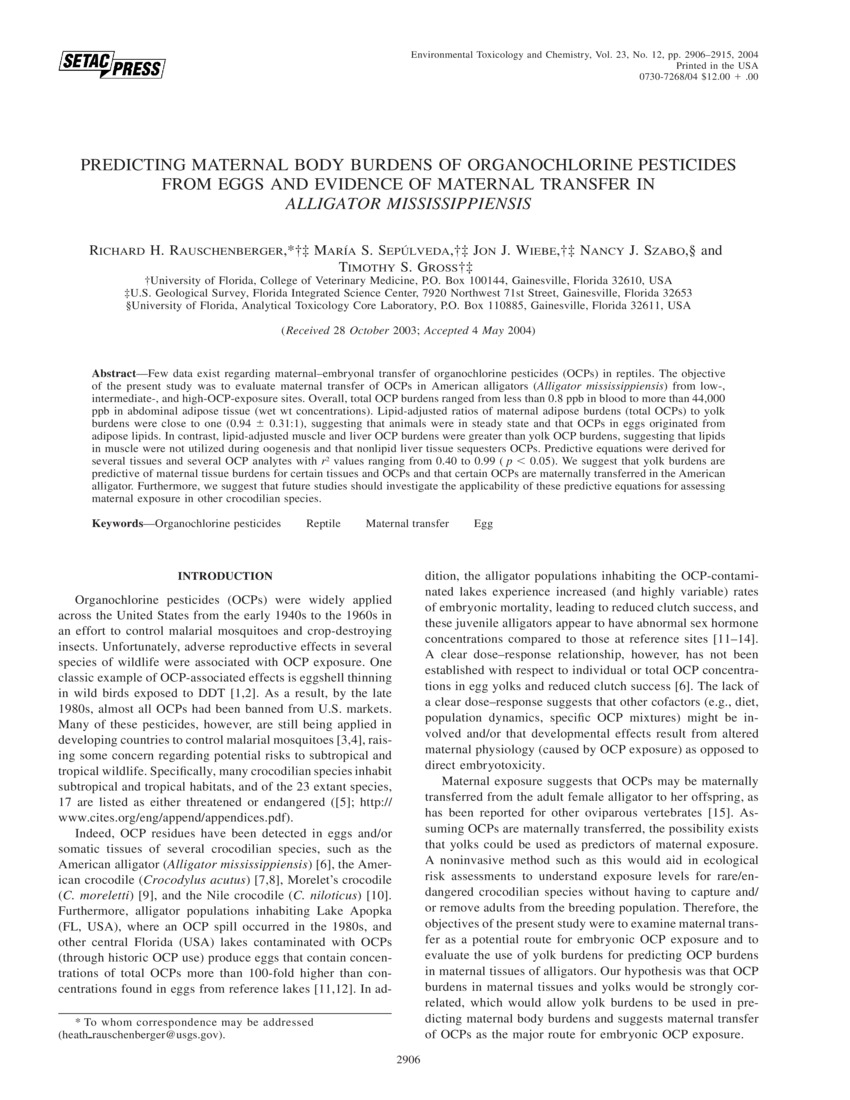Journal Article
AccessPredicting Maternal Body Burdens of Organochlorine Pesticides from Eggs and Evidence of Maternal Transfer in Alligator mississippiensis
Few data exist regarding maternal–embryonal transfer of organochlorine pesticides (OCPs) in reptiles. The objective of the present study was to evaluate maternal transfer of OCPs in American alligators (Alligator mississippiensis) from low-, intermediate-, and high-OCP-exposure sites. Overall, total OCP burdens ranged from less than 0.8 ppb in blood to more than 44,000 ppb in abdominal adipose tissue (wet wt concentrations). Lipid-adjusted ratios of maternal adipose burdens (total OCPs) to yolk burdens were close to one (0.94 ± 0.31:1), suggesting that animals were in steady state and that OCPs in eggs originated from adipose lipids. In contrast, lipid-adjusted muscle and liver OCP burdens were greater than yolk OCP burdens, suggesting that lipids in muscle were not utilized during oogenesis and that nonlipid liver tissue sequesters OCPs. Predictive equations were derived for several tissues and several OCP analytes with r2 values ranging from 0.40 to 0.99 (p < 0.05). We suggest that yolk burdens are predictive of maternal tissue burdens for certain tissues and OCPs and that certain OCPs are maternally transferred in the American alligator. Furthermore, we suggest that future studies should investigate the applicability of these predictive equations for assessing maternal exposure in other crocodilian species.
Publisher - Wiley Interscience
Subjects - Animal, American Alligator, Alligator mississippiensis; Chemical, Organochlorine Pesticides (OCP)
Citation: Rauschenberger RH, Sepulveda MS, Wiebe JJ, Szabo NJ, Gross TS. 2004. Predicting Maternal Body Burdens of Organochlorine Pesticides from Eggs and Evidence of Maternal Transfer in Alligator mississippiensis. Environ. Toxicol. Chem.; 23(12):2906-2915 http://dx.doi.org/10.1897/03-584.1
